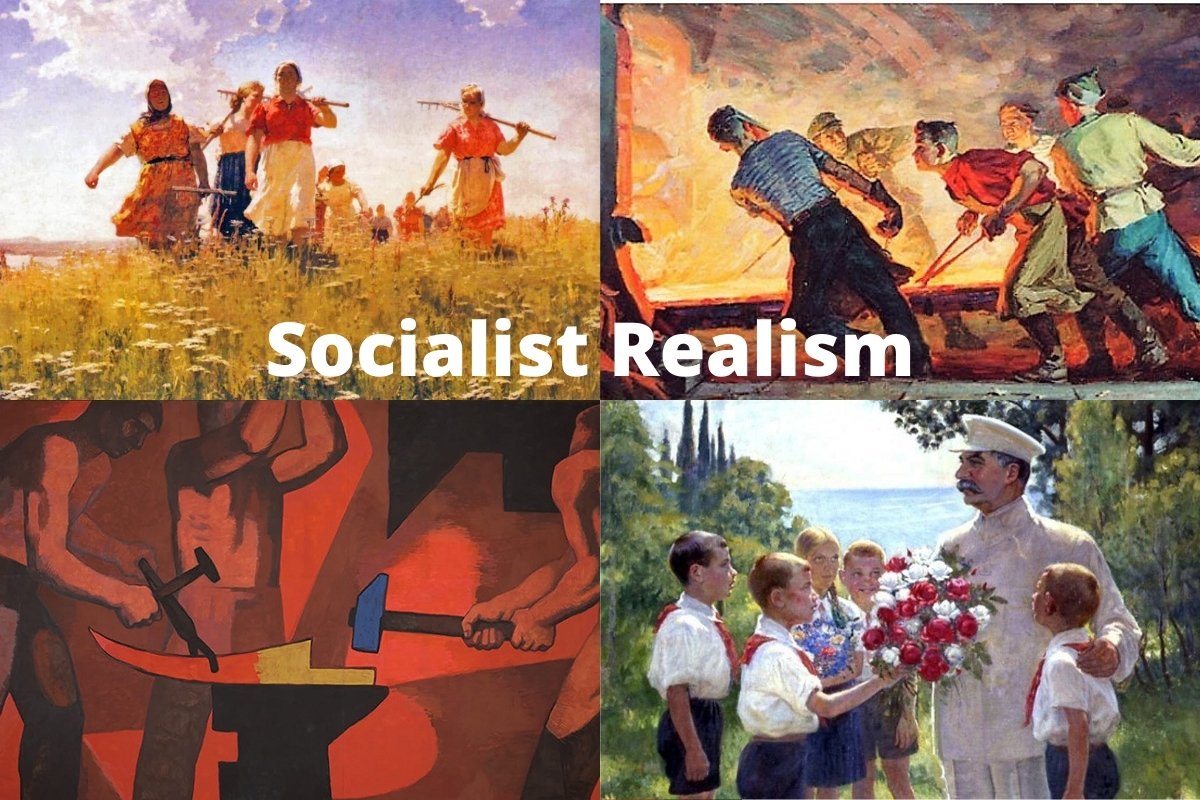Socialist Realism is a style of realistic art that glorified every day Russian life, it was a means to enforce positive only images of the ruling party and to present an idealistic view of the ordinary worker and everyday life in the USSR.
Imposed in the Soviet Union by Joseph Stalin after his rise to power, it was the official art style of many Soviet countries and served as means of state controlled propaganda.
It was not just the visual arts that were affected almost every form of art or expression fell under it’s umbrella, literature, music, theater, sculpture, and even something so innocent as children’s books were forced to fall in line.
Those that refused were either killed or had every available example of their work confiscated and destroyed.
What is Socialist Realism?
Socialist Realism is a realistic art style that glorified Russian life in a falsely idealistic way and was used as a means of state controlled propaganda that promoted only positive images of the ruling Communist party and severely punished those that reflected real life under the Communist regime.
It was mass state wide propaganda that suppressed any other or movement that would threaten the Soviet Union.
Content or images that had any form of reference to abstract, expressionist, erotic, and religious imagery was either banned outright or was strongly censored.
It should not be confused with another similarly named art movement known as Social Realism that was an attempt through art, photography and literature to reflect the real social-political conditions of the ordinary working class in a effort to critique those in power.
Social realism was a world wide phenomenon whereas socialist realism was confined to mainly countries of the Soviet Union.
What are the Characteristics of Socialist Realism?
The characteristics of Socialist Realism were a glorified representation of communist ideals that put the party first, gave a romantic view of the ordinary Russia worker, negative or pessimistic images were banned, always displayed an optimistic view of Russian life.
Also Read: Realism vs Abstract Art
All forms of innovation, modernism or any other deviation from what the party propaganda machine required were banned. Many artists writers, playwrights and musicians were either killed or had their life’s work destroyed.
Many famous Russian artists had no choice but to concede and change to this new style or face the consequences.
Thousands of great literary works were destroyed. Of those artists that did survive most of the artwork was confiscated and destroyed resulting in many famous Russian paintings being lost forever.
Great artists such as Anatol Petrytsky who was heavily influenced by the cubists and futurists had spent most of the 1920’s painting a large series of over 150 portraits of well known Ukrainian cultural figures had almost all of his work destroyed.
When did Socialist Realism Start?
Socialist Realism officially started in 1934 after the All-Union Congress of Soviet Writers declared it to be the one true art form.
It had been previously mentioned in Stalin’s 1928 5-Year Plan whereby all previous forms of artistic expression and experimentation were urged to be suppressed.
In 1932, two years prior to socialist realism becoming the official art form of the Soviet Union the Central Committee of the All-Union Communist Party rendered all other artists unions of various art forms to be null and void.
Communist Art
Another way to look at social realism is that it was communism art that was enforced at a state level. The approved subject matter would vary depending on the political landscape at the time.
It existed in a closed environment for decades and any external influence that would try to contravene it’s founding characteristics would be met with severe reprisals.
All successful internal political campaigns, economic achievements and large-scale infrastructural completions were all celebrated with thousands of posters and leaflets printed in an effort to showcase the might of the Soviet state.
This type of political art was much more extreme than in any western country to the point that it could be labeled as nothing more than propaganda art.
The contemporary art world of the west all but ignored any form of communist art and dismissed it entirely to the point that it was effectively exempt from any form of academic discussion or text book.

